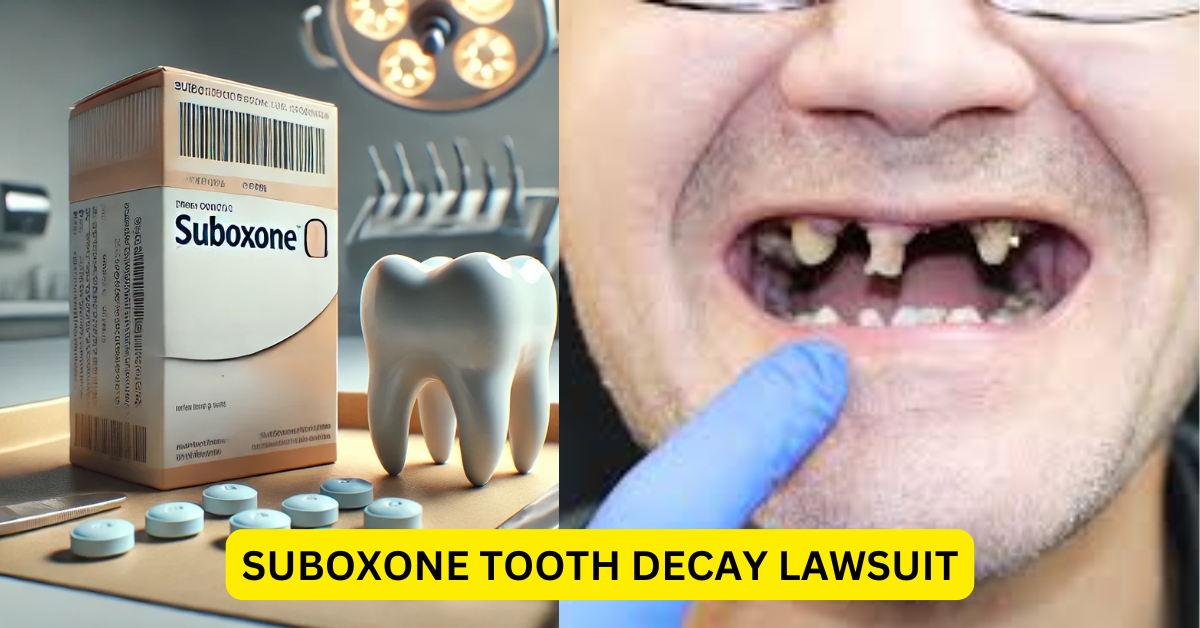Suboxone, widely used for treating opioid withdrawal symptoms, is seen as a lifesaving medication for those battling addiction. The medication combines buprenorphine and naloxone and works by reducing cravings and preventing users from getting high on other opioids. It’s often prescribed as dissolvable film strips placed under the tongue, making it easy to administer.
However, recent lawsuits have brought attention to an alarming side effect of Suboxone: severe dental issues, including tooth decay, gum problems, and tooth loss. These issues have sparked legal actions against its manufacturer, Indivior, claiming the company failed to warn patients and doctors about the potential oral health risks associated with its use.
The Suboxone Dental Lawsuit: An Overview
The lawsuits allege that Indivior did not provide adequate warnings about the risks of using Suboxone’s sublingual film, which has been linked to dental decay. Patients argue that they were left unaware of these risks, which could have influenced their treatment decisions.
The U.S. Food and Drug Administration (FDA) issued a warning in 2022, highlighting that oral medications containing buprenorphine could cause dental problems such as:
- Tooth decay
- Cavities
- Gum infections
- Tooth loss
The FDA identified over 300 cases of dental issues linked to Suboxone, with 131 of these classified as severe. These numbers are likely underreported, as not all cases are submitted to the FDA.
Who Is Eligible for the Suboxone Lawsuit?
If you were prescribed Suboxone before June 2022 and have experienced dental problems like tooth decay, gum disease, or tooth loss, you might be eligible to join the lawsuit. Eligibility may be strengthened if:
- Your dental health was in good condition before starting Suboxone.
- You have experienced significant dental issues after taking the medication.
The statute of limitations varies by state, so it’s essential to consult with an attorney to determine your eligibility.
Why Does Suboxone Cause Tooth Decay?
Several factors contribute to Suboxone-related dental problems:
- Prolonged Contact with Acids: The dissolvable film strips remain under the tongue for 5-10 minutes, exposing teeth and gums to acids that weaken enamel and increase the risk of decay.
- Dry Mouth (Xerostomia): Suboxone often causes dry mouth, reducing saliva production. Saliva plays a crucial role in neutralizing acids and protecting teeth. Without it, the risk of cavities and gum disease increases.
- Sugar Cravings: Like other opioids, Suboxone can heighten sugar cravings, leading to poor dietary choices and worsened dental health.
Key Developments in Suboxone Lawsuits (2023–2025)
The Suboxone lawsuits have gained momentum in recent years. Here are some notable updates:
- January 2022: FDA issues warnings about dental risks linked to buprenorphine medications.
- June 2022: Suboxone packaging is updated to include dental risk warnings.
- February 2024: Several claims are consolidated into a class-action lawsuit (MDL) in the U.S. District Court for the Northern District of Ohio.
- December 2024: A judge is set to hear Indivior’s motion to dismiss allegations.
- July 2024: Over 600 lawsuits are filed, claiming Suboxone caused severe dental damage.
What Should You Do If Affected?
If you or someone you know has experienced dental damage while using Suboxone, consider these steps:
- Document Your Dental Issues: Keep records of your dental health before and after starting Suboxone.
- Seek Legal Advice: Contact an attorney experienced in product liability lawsuits to evaluate your case.
- File Your Claim: Ensure you meet the statute of limitations in your state.
Potential settlements may cover medical expenses, dental procedures, and compensation for pain and suffering.
Final Thoughts
While Suboxone has been a critical tool in fighting opioid addiction, its impact on dental health has raised serious concerns. Patients deserve clear warnings about such risks, enabling them to make informed choices about their treatment. If you’ve been affected, now is the time to act and seek justice.
This article has been carefully fact-checked by our editorial team to ensure accuracy and eliminate any misleading information. We are committed to maintaining the highest standards of integrity in our content.
Filza specializes in simplifying financial topics for everyday readers. Whether breaking down Canada’s tax guides or U.S. benefits like SNAP and VA Disability, Filza’s relatable writing style ensures readers feel confident and informed. Follow her insights on LinkedIn or reach out via email at shewrites.health@gmail.com.
